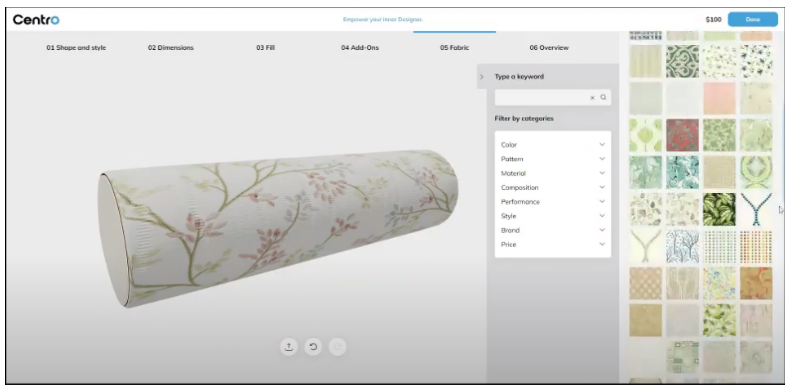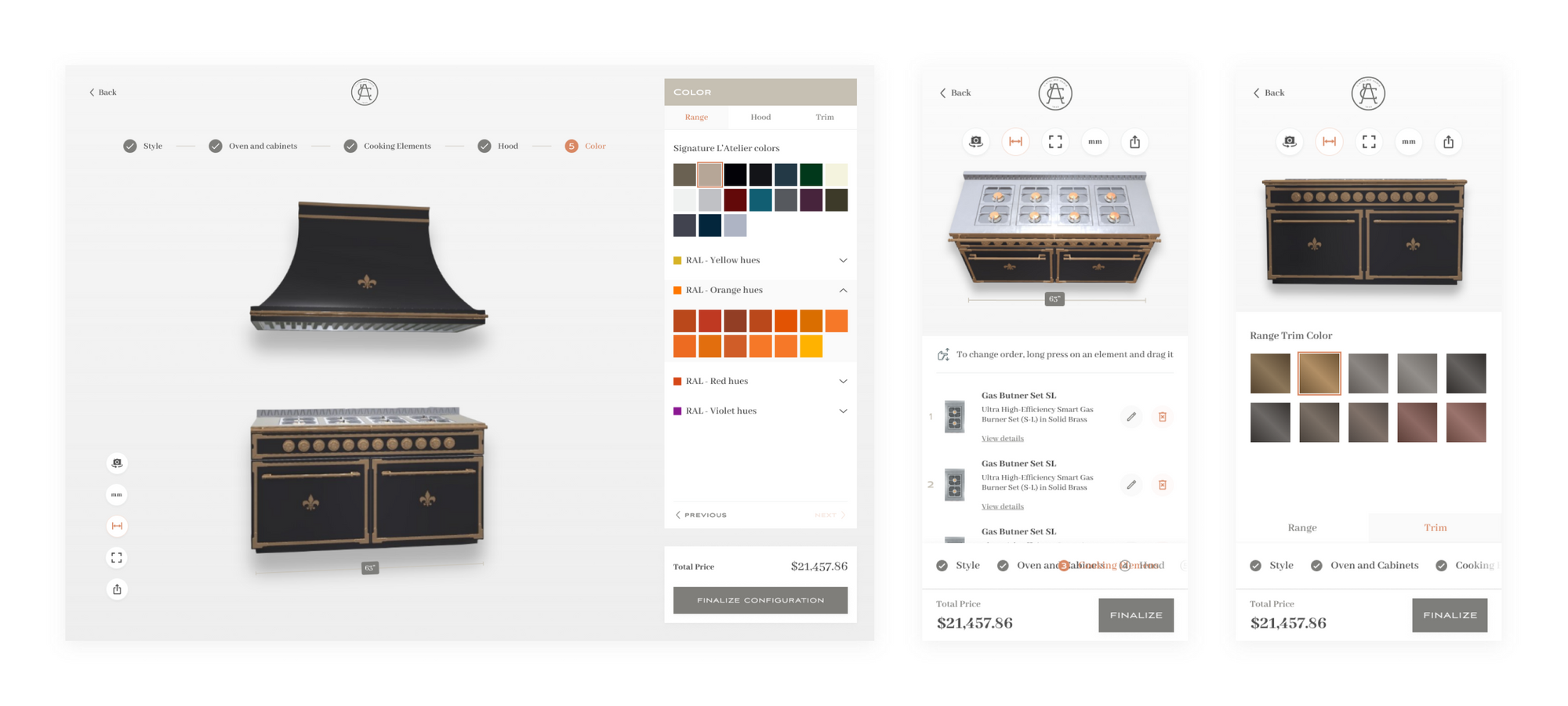Why a 3D Product Configurator Is Worth Your Investment
When brands invest in a 3D product configurator, it needs to be that: an investment. 3D product configurators are the next stage of eCommerce. Brands that leverage them can achieve higher ROI, reduce returns and manual operating costs, eliminate costly errors, and improve customer experience.

When brands invest in a 3D product configurator, it needs to be exactly that: an investment.
3D product configurators are the next stage of eCommerce. Brands that leverage 3D product configurators can achieve higher ROI, significantly reduce returns and manual operating costs, eliminate costly errors, and improve customer experience.
As the eCommerce industry continues to thrive, resulting in sales of $4.9 trillion worldwide in 2021, global brands need to position themselves to take full advantage. That’s why businesses are now looking at ways to differentiate themselves in the market. They need to capture more attention, reduce return rates, and gather more positive reviews to achieve greater ROI.
So, how does a 3D product configurator help?
Traditional Product Pages and Showrooms Are No Longer Enough
Traditional product pages with 2D images are no longer sufficient. And increasing proportion of products are customizable in some way. But how can buyers be sure of their customized selections without viewing them? Using still images to show items and the available options for customization is a shallow way to showcase a product, which may eventually lead to customer dissatisfaction and high return rates.
Moreover, nowadays, if your business still requires customers to come to your showroom or store in person to make custom orders, then you need to rethink your strategy. In-store customizations are not scalable. And as long as this is your only option, you’ll struggle to achieve global or regional sales growth.
Modern shoppers expect more engaging and tailored experiences. Personalization is now taking center stage. They prefer to personalize and customize items with different colors, fabrics, engravings, etc.
Customers expect brands to provide more consistent experiences that closely mirror real-life while catering to their preferences. Businesses that continue to 2D imagery will struggle with persistent challenges of poor retention, high rate of returns, lack of personalization, and more.

3D Product Configurators: More Positive Reviews, Higher ROI, Fewer Returns
As enterprises look to grow their ROI, they should consider avenues to enable better customer engagement, greater personalization, more positive experiences, and fewer returns. 3D product configurators can help customers visualize products better by showcasing their selections and configuration options.
A 3D product configurator adds significant value to businesses by helping to:
Drive Better Experiences and Higher Engagement
A customer buying a new kitchen cabinet wants to explore the different customization options available, choosing the color, number of drawers, length and depth, and more. With a 3D product configurator, customers can see a real-time, 360-degree view, get pricing, and order the exact configuration they want.
Compared to a traditional product page full of still images, a 3D product configurator enhances the overall customer experience by providing users with real-time visualization of their customized preferences. One of the best ways to retain customers is to offer a better buying experience. Moreover, 20% of customers are willing to pay a premium for customized products.
Read more: Why a D2C Custom Product Manufacturer Needs a Product Configurator

Enable Greater Product Optimization and Innovation
Why keep making products with limited sales potential? Wouldn't it be better to test out product innovations before committing them to production?
With a holistic understanding of customer preferences, enterprises can streamline manufacturing processes. Because of the 3D nature of these product visualizations, customers may spend more time viewing a particular customized option and comparing prices before eventually buying it.
This helps lower manufacturing costs and waste, reduces product stock, and facilitates greater innovation. Also, businesses can integrate back-office systems such as a customer data platform (CDP) or customer relationship management (CRM) with their 3D product configurator to help track and manage customer journeys.
Ensure Higher, Faster Sales and Better ROI
Many sales teams have to navigate back and forth with customers across calls, emails, and messages to arrive at a quotation for their customized choices. This can be quite laborious and error-prone depending on the scale of the preferences. And even with that, they may end up dissatisfied with the finished product, leading to higher returns.
A 3D product configurator helps businesses drive faster sales by funneling customers through the entire buying process without involving their sales staff. Consumers can visualize their preferences in the configurator, receive a quotation for them, and make payments without speaking with a salesperson.
Fewer Returns
In the US in 2021, $218 billion worth of eCommerce items were returned, approximately 20.8% of all purchases, according to NRF. Sure, a straightforward returns policy is a hallmark of any great online retailer, but every retailer would prefer to lower the return rate, boosting profit margins in the process.
By taking a closer look at the reasons for such high return rates, you’ll find that customers often return items that weren’t accurately described or displayed online. An absence of images, lack of a 360-degree product viewer, or inability to visualize details about the product can all contribute to this.

Perhaps the texture of their smartwatch strap wasn’t well explained, or the corners of the coffee table turn out to be too rounded. In short, there’s a disconnect between what they saw online and what was delivered.
With a 3D product configurator, customers are far more likely to get what they actually saw online. They can view it from all angles while changing colors and materials. And, with a robust 3D product configurator, they can even see accurate depictions of different materials (e.g., rough fabric vs smooth silk).
How L'Atelier Paris Wows Customers with a 3D Product Configurator
As you can see, a 3D product configurator is not just another marketing technology; it is an innovative, versatile tool that helps you capture customers’ attention, drive engagement, improve product visualization, and boost sales. That was one of the inspirations that led L'Atelier Paris to invest in a 3D product configurator.

L’Atelier was experiencing challenges with enabling customizations online since most modern buyers don’t want to go into a store just to specify preferences. A manual process also makes it far more difficult to get all the customizations and designs of the customer right. By implementing Salsita 3D Configurator, they witnessed a dramatic increase in customer engagement.
At Salsita, we don’t just supply the 3D product configurator software, we create a bespoke implementation that integrates seamlessly into each customer’s eCommerce website. Instead of simply handing over a generic pre-packaged 3D product configurator, our team address the unique aspects of each customer’s project, seeking to embed the product configurator into their existing customer experience.
It’s this dedication from our team that led Ricardo Moraes, Founder of L'Atelier Paris, to say:
I've never experienced the delivery team living up to the sales team's hype, but in Salsita's case, they actually exceeded it.
Are you interested in learning more about 3D product configurators? Contact the Salsita team today.


